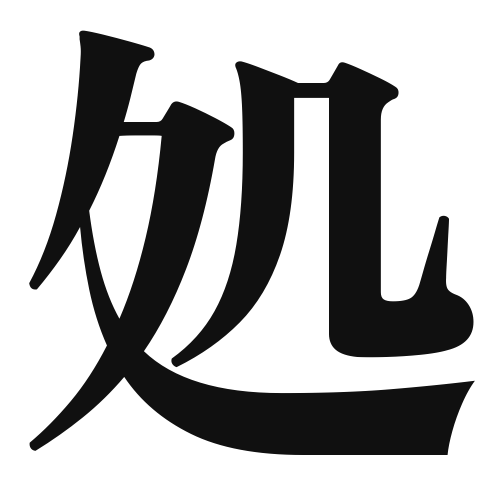1. Overview of Meaning
The kanji “処” (sho) generally means “to deal with,” “to handle,” or “a place.” It conveys the idea of managing a situation or being in a specific location.
2. Formation and Radical
Formation of the Kanji: The kanji “処” is a compound character that combines elements to convey its meaning. It is made up of the radical “土” (earth) and the phonetic component “者” (person), suggesting a place where people deal with matters related to the earth or land.
Radical: The radical of “処” is “土,” which relates to earth or ground, indicating a connection to physical locations or settings.
3. Examples of Usage
Common Words and Phrases: Some frequently used words that include “処” are “処理” (shori – processing), “処方” (shohou – prescription), and “処遇” (shoguu – treatment).
Example Sentences in Daily Conversation:
- この問題をどう処理しますか? (How will we handle this problem?)
- 医者が処方した薬を飲んでいます。 (I am taking the medicine prescribed by the doctor.)
4. Synonyms and Antonyms
Similar Kanji: A similar kanji is “扱” (atsu – to handle), which also conveys the idea of managing or dealing with something, but it often emphasizes the action of handling rather than the location.
Opposite Kanji: An antonym is “放” (hou – to release), which implies letting go or not dealing with something, contrasting with the idea of managing or handling a situation.
5. Cultural and Historical Background
Connection to Japanese Culture: The kanji “処” is often used in contexts related to governance and management, reflecting the importance of order and organization in Japanese society.
Proverbs and Idioms: One common expression is “処世術” (shoseijutsu – the art of living), which refers to the skills and strategies one uses to navigate life and its challenges.
